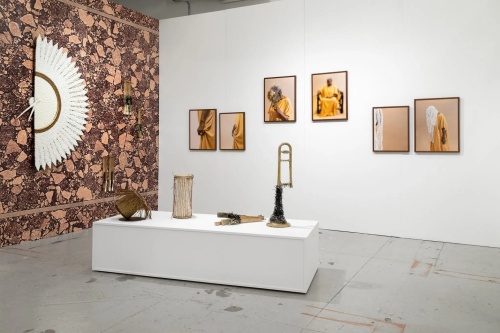Cranbrook Academy of Art Announces Carla Diana Will Lead New 4D Design Department
BLOOMFIELD HILLS, MICH., May 7, 2018 — Cranbrook Academy of Art today announced that Carla Diana has been named Designer-in-Residence and will oversee the Academy’s new 4D Design program.
4D Design will be the first new department introduced at the Academy since the Photography program was created in 1971. Since its inception, Cranbrook Academy of Art has been a leader in innovation and experimentation in the fields of art, design and architecture. The new 4D Design program will build upon that legacy by adding a program that addresses the role design plays in the landscape of the world’s rapidly emerging technologies and communications.
“The 4D Design program aims to prepare the next generation of design innovators and leaders in the fields of experience and interaction design,” says Chris Scoates, the Maxine and Stuart Frankel Director of Cranbrook Academy of Art and Art Museum.
The 4D Design program joins the Academy’s 10 existing departments: 2D Design, 3D Design, Architecture, Ceramics, Fiber, Metalsmithing, Painting, Photography, Print Media and Sculpture, bringing the total number of programs offered at the Academy to 11.
Carla Diana has been selected to help launch and shape the program, which will begin accepting students for the fall of 2019. She comes to Cranbrook from Parsons School of Design, the New School, where she served as Assistant Professor of Product and Industrial Design. Prior to Parsons, she created and taught some of the country’s first courses focused on designing smart objects for the University of Pennsylvania’s Integrated Product Design program and the School of Visual Arts PoD and IxD MFA programs. She maintains strategic alliances with a number of academic research groups such as UT Austin’s Socially Intelligent Machines Lab, where advances in artificial intelligence and machine learning manifest in expressive robots.
“Throughout its history, Cranbrook design has been synonymous with exploring new frontiers,” says Diana. “The creation of the 4D Design department paves the way for the next generation of pioneers to work with emerging technologies. I’m thrilled to have this opportunity to both develop and lead the program.”
Diana is an accomplished designer, author and educator who explores the impact of future technologies through hands-on experiments in product design and tangible interaction. She has designed a range of products from robots to connected home appliances, and her robot shell designs have appeared on the covers of Popular Science, Technology Review and the New York Times Sunday Review. In addition to her responsibilities as an educator, her role as creative lead for research robots allows her to maintain an independent practice where she often serves as a consultant for clients, describing and illustrating future visions. She was the industrial designer for the iconic humanoid robots, Simon and Curi. Before establishing her own practice, Diana worked with the product innovation firm Smart Design for many years and was named the firm’s first Smart Fellow.
From 2002 to 2007, Diana was Professor of Interactive Design at the Savannah College of Art and Design, where she co-wrote the curriculum for the College’s first Interactive Design program and developed Physical Computing courses.
Diana is a 2000 graduate of Cranbrook Academy of Art’s 3D Design department and holds a bachelor’s degree in Mechanical Engineering from The Cooper Union.
“The intent of the 4D Design program is to help train designers to think about how they can explore and impact the near future through the use of interaction design, convergent technologies, user interface design, making, hacking, and tinkering,” said Scoates. “With Carla’s background and incredible combination of curiosity and discipline, we are confident that she will shape the program in a way that will graduate leaders in the field. And we feel that she will do so with the same enthusiasm that has led Cranbrook Academy of Art to continue to be the premier institution for cultivating experimental design work for more than 75 years.”
Diana writes and lectures frequently on the social impact of robotics and emerging technology. She is the author of the first children’s book about the future of 3D printing and design, LEO the Maker Prince, published by Maker Media, and is coauthor of a book on smart object design to be published by Harvard Business Review Press next year. She currently cohosts the Robopsych Podcast, a biweekly discussion around design and the psychological impact of human-robot interaction.
Diana will join the Academy in the fall of 2018.
Media Contact:
Julie Fracker
Director of Communications
Cranbrook Academy of Art and Art Museum
248.645.3329
jfracker@cranbrook.edu


